From humble to haute, the cuisine of Nayarit encompasses culture, history and landscape. Explore new tastes in this culinary-rich region on Mexico’s Pacific coast. Use the day-by-day itinerary Scenic Drive: Mexico, Nayarit to plan your trip.
by Donna Peck
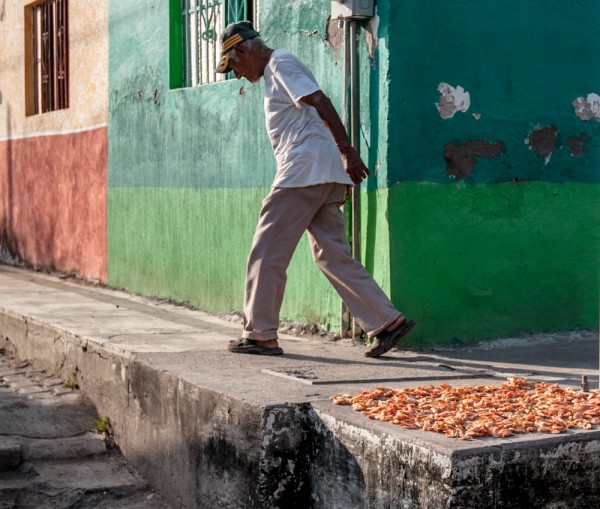
Judging from the heft of a typical burrito, you would think Mexican food was invented to satisfy a prodigious hunger. The lunch line at my neighborhood taqueria bears this out. Bikers in spandex shorts, painters in white overalls, handymen and women, all with sweat-smudged faces and a ravenous appetite.
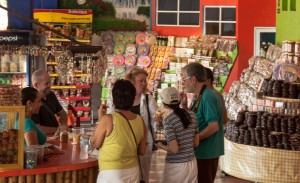
Switching from white overalls to white linen, I vacationed with friends on Mexico’s Pacific coast in Nayarit.
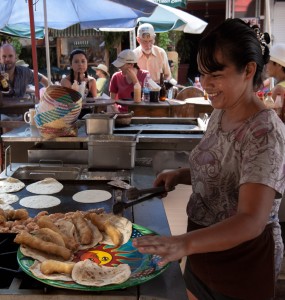
Each day we paused to eat in towns and villages, more from hunger born of curiosity than sweat. In San Blas, Betty Vasquez served a shrimp omelette with a redolent mole sauce made a regional recipe.In Sayulita, Alfreda mounded fried fish, tomatoes, mango and chipotle sauce on corn tortillas and smiled at the chorus of muchas gracias when she delivered the platter.
On Mexcaltitan island in Nayarit’s northern lagoons, the sea bass went from the water to the grill to our table. In Nuevo Vallarta, Mexico’s preeminent chef paints dishes with color and flavor at a beachfront resort.
Sweets and sweat
These experiences spoke to our awakened appetite. When Hwy. 200 emerged from Sierra Madre’s green tunnels, we pulled over at a roadside stand and coconut bar. Los Kiki’s is run by Nayarit’s famous candy makers. Guadalupe Garcia handed out toothpicks of diced yellow plums and candied fruit made from tamarind, pineapple, passion fruit, and lemon.
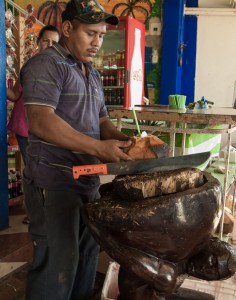
Rigo wielded a sharp machete, preparing fresh coconut drinks. His chopping block pedestal was carved into the Aztec version of Atlas. We slurped the juice through straws then handed him our empty shells. He swung again, reducing the coconut meat into bite-size chunks. He packed it into ziplock bags as a takeaway treat.
A hot sauce fortune
Mexicans’ love of sweets is matched by their love of hot sauce. Roberto Lopez, owner of Salsa Huichol says the demand for his grandmother’s hot sauce made him a rich man.
On a factory tour, he said, “In the 1940s, my grandfather needed a sauce to go along with the snacks at the family bar. My grandmother whipped up a batch from dried chili peppers, cumin, spices and vinegar,” Roberto said. “When she died, my father cooked the sauce,” he said. “No one outside the family has the recipe.”
After school, young Roberto worked for low wages picking tobacco. It occurred to him that his grandmother’s hot sauce was better than any he had ever tasted. “I filled recycled beer bottles with hot sauce and sold them from my bicycle. After five hours of riding around, I earned as much money as I did working a week in the fields,” he said. His grandmother’s sauce is exported all over the world. To keep up with current consumption, 100,000 bottles roll down the assembly line each week.
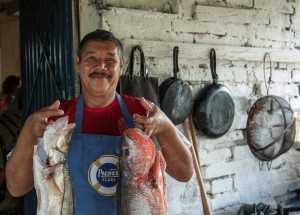
Natural beauty and Aztec roots
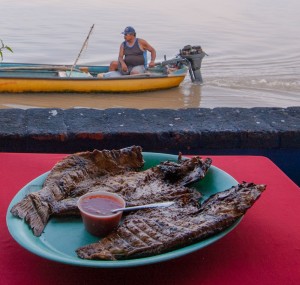
Fish was another eye-opener in Nayarit. An all-day excursion by van brought us to a pier in northern Nayarit’s coastal lagoons. The open-air motorboat glided through the vast inland waters toward Mexcaltitan, the ancestral home of the Aztecs.
Exhibits at the island’s small museum piece together the story. An indigenous tribe 4,000 years ago constructed the island to have access to marsh birds, turtles, fish, shrimp, lobster, oysters and mussels. They migrated east and built Tenochtitlan (Mexico City) along designs similar to those of Mexcaltitan. The island’s streets flood annually, forcing the residents to paddle boats through town. During the rainy season in Mexico City streets at one time became canals.
From the docks on the outer ring road, all streets led to the central plaza. The absence of cars was immensely pleasurable. Shrimp dried on elevated sidewalks. Children tossed bottle caps on the sandy street bed and neighbors chatted in doorways.
Mexcaltitan still thrives on the wetland’s teeming abundance. The pre-Columbian presence prevails at Alberca, an open-air restaurant on the water’s edge. Inviting smells wafted from the kitchen and outdoor fireplace where fish caught a few hours ago sizzled, its skin charred and crispy. Never put on ice, never refrigerated, the fish retains its sweetness.
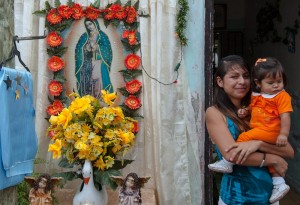
Around the work table women chatted, blending cornmeal then with a flapping motion, flattening the mixture into thin tortillas. In Aztec times when the corn sprouted, women gathered for ritual dances in the fields. Hair untied, clothes loosened, they danced bare-breasted to thank the corn god Centeotl. The women returned to the village singing and dancing under a shower of flower petals.
Seated in the dining pavilion, we scooped ceviche into the corn tortillas. The pink shrimp spread out on sidewalks to dry appeared in the ceviche, tamales and the tasty Aztec stew, tlaxtihuilli, a shrimp broth with corn meal, tomato, ancho chile, garlic, oregano, cumin and pepper.
Magic ingredient
By the next sunset we were in Nuevo Vallarta, at a beach resort eating our way through the signature dishes of Mexico’s doyenne of alta cocina, Patricia Quintana. The menu was created for the International Gourmet Festival held every year in November, a showcase for Mexican haute cuisine.
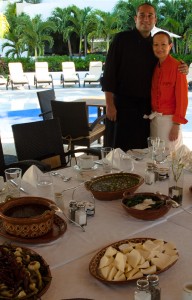
Patricia innovates on traditional dishes, playing with flavor, color, and intensity. The sea bass ceviche tasted sweet from the diced mango and spicy from the Salsa Huichol hot sauce. The lobster sparkled with flavor and color, infused with white wine cream and cempasuchil (Mexican marigold) powder. On Day of the Dead, the flower’s bright color and pungent scent attracts souls to offerings of food and drink at the family altar.
The bean soup had a velvety smooth texture, a seductive potion made from tomato broth, foie gras, chipotle chili and piloncillo (unrefined whole cane sugar from the sugar factory). Chiles, she tells us, are “Mexico’s magical ingredient.”
Mexican wine in contrast is entirely of European origin. Our seafood dishes were paired with a voluptuous full-bodied Chardonnay from Casa Madera, the oldest winery in the Americas. In 1791 the Jesuits planted vines at the Santo Tomás Mission in Parras Valley.
The unoaked Chardonnay from Casa de Piedra in Guadalupe Valley was a zinger: fresh and citrusy. Hugo D’Acosta started the winery after working at the Santo Tomás vineyards. Many Guadalupe Valley white wines pair well with Nayarit’s seafood. We tasted Chenin Colombard from Monte Zanic.
The state’s cultural treasures lay not in museums but in restaurants, cafes and roadside stands. This education had an unavoidable consequence. The mere heft of a foil-wrapped burrito is no longer satisfying.
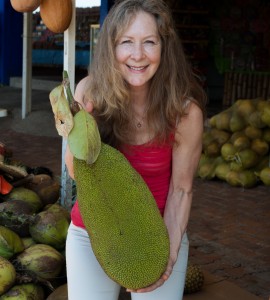
I still go to taquerias. But as I wait on line, I chat with my neighbors about real Mexican food. “Did you know there are 300 recipes for mole in Mexico!” “You should taste Alfreda’s fish tacos from a street stall in Sayulita: food worth flying for.”
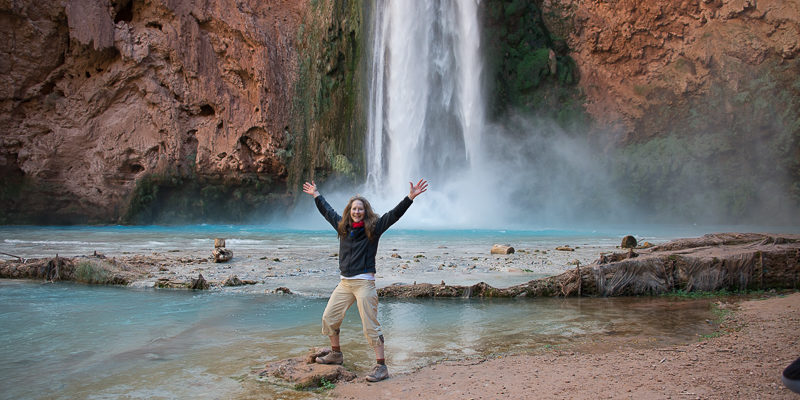
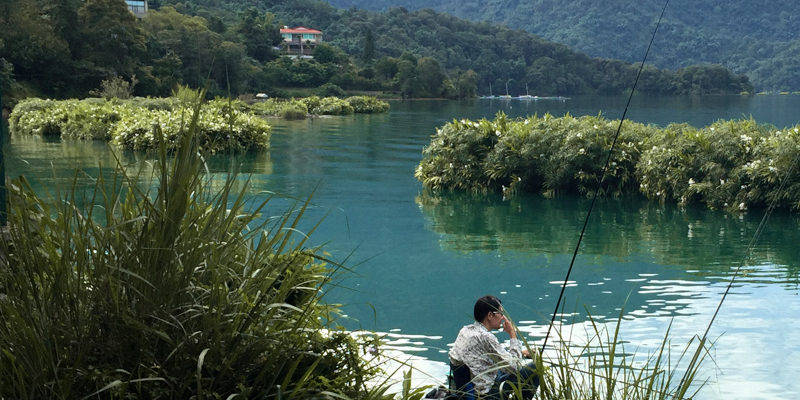


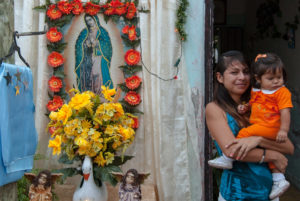

Leave a Reply